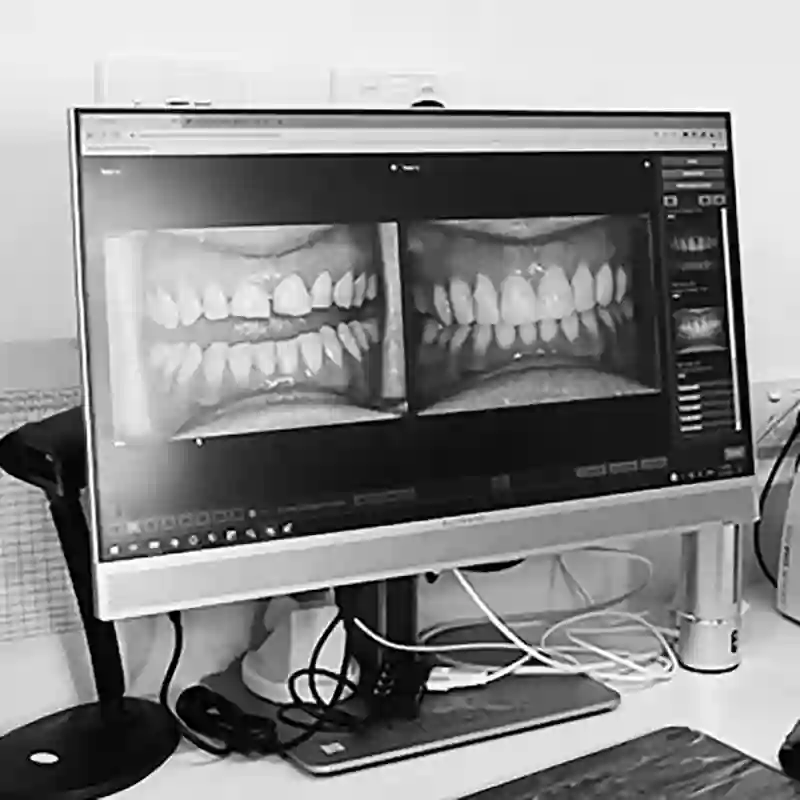Orthodontics
Providing precision and comfort
Explore customised orthodontic care with advanced digital design and 3D printing

Orthodontics
Providing precision and comfort
Explore customised orthodontic care with advanced digital design and 3D printing
Digital orthodontic solutions
In orthodontics, digital technologies have significantly improved work processes, patient experience and treatment results in recent years. Two key components in this digital transformation are digital design and the wide range of applications delivered by 3D printing. Get ready for a future where every aspect of orthodontics is elevated by increasingly-seamless integration of digital technologies.
Digital design in orthodontics
Digital design is a patient-centred approach that uses advanced intraoral 3D scanning and modelling software to meticulously plan orthodontic procedures.
Benefits of digital design in orthodontics

Enhanced patient communication: Digital design allows dental professionals to visually convey treatment plans to patients, making it easier for them to understand and commit to their orthodontic treatment. Visual aids help set realistic expectations and gain patient confidence.
Precision planning: It enables precise measurements and digital simulations, ensuring the optimal outcome of orthodontic procedures. This precision also facilitates a comprehensive treatment plan considering tooth alignment, functionality and overall facial aesthetics. It helps in achieving the desired smile makeover.
Predictable results: By fine-tuning the treatment plan through digital design, dental professionals can predict and guarantee the results, providing patients with peace of mind. Moreover, it enables the customisation of treatment plans to meet unique patient goals. It seamlessly integrates with other digital technologies, such as 3D printing, facilitating a smoother and more efficient treatment process.
3D printing applications for orthodontics
Orthodontic models: 3D printers create highly accurate, patient-specific orthodontic models, eliminating the need for traditional, uncomfortable dental impressions.
Indirect bonding: 3D printing can also be used for the precise and efficient creation of indirect bonding trays. This improves the placement of orthodontic brackets and reduces chair time for patients.
Removable appliances: Various orthodontic devices, including expansion appliances and retraction hooks, can be custom-made with 3D printers for enhanced patient comfort and effectiveness.
Orthodontic auxiliaries: Customised solutions like patient-specific chains for impacted teeth or auxiliary attachments are easily fabricated, leading to more effective treatment.
Nasoalveolar moulding devices: Specialised plates for cleft lip and palate patients can be delivered rapidly, reducing patient discomfort and the number of clinical visits.
Clear aligners: 3D printing technology directly creates clear aligners from highly precise 3D models of a patient’s teeth. This process significantly improves both the accuracy and patient comfort of clear aligners.
Retainers: 3D printing allows for precise and customised production of retainers, making them less likely to cause discomfort or fit issues.
Customised brackets: Dental professionals can now create brackets that perfectly fit each patient’s teeth, increasing treatment efficiency.
Occlusal splints & night guards: 3D printing ensures the precision of occlusal splints and night guards, which are vital in treating temporomandibular joint disorders and bruxism (teeth grinding).
Surgical guides: 3D-printed surgical guides make miniscrew placement more accurate and safer, and they guide corticotomy procedures for accelerated orthodontic tooth movement.
Orthodontics redefined
The integration of digital design and 3D printing revolutionises orthodontic treatment planning, fostering unparalleled precision. This synergy not only enhances communication between dental professionals and their patients, but also propels orthodontic procedures into a new era of efficiency.
It’s a promising development that benefits both patients and practitioners. Patients can expect more accurate and comfortable treatments with predictable outcomes, while dental professionals can enjoy streamlined workflows and offer personalised treatment plans with predictably superior outcomes. This paradigm shift reshapes the landscape of orthodontics, promising new levels of assurance and comfort for patients.

